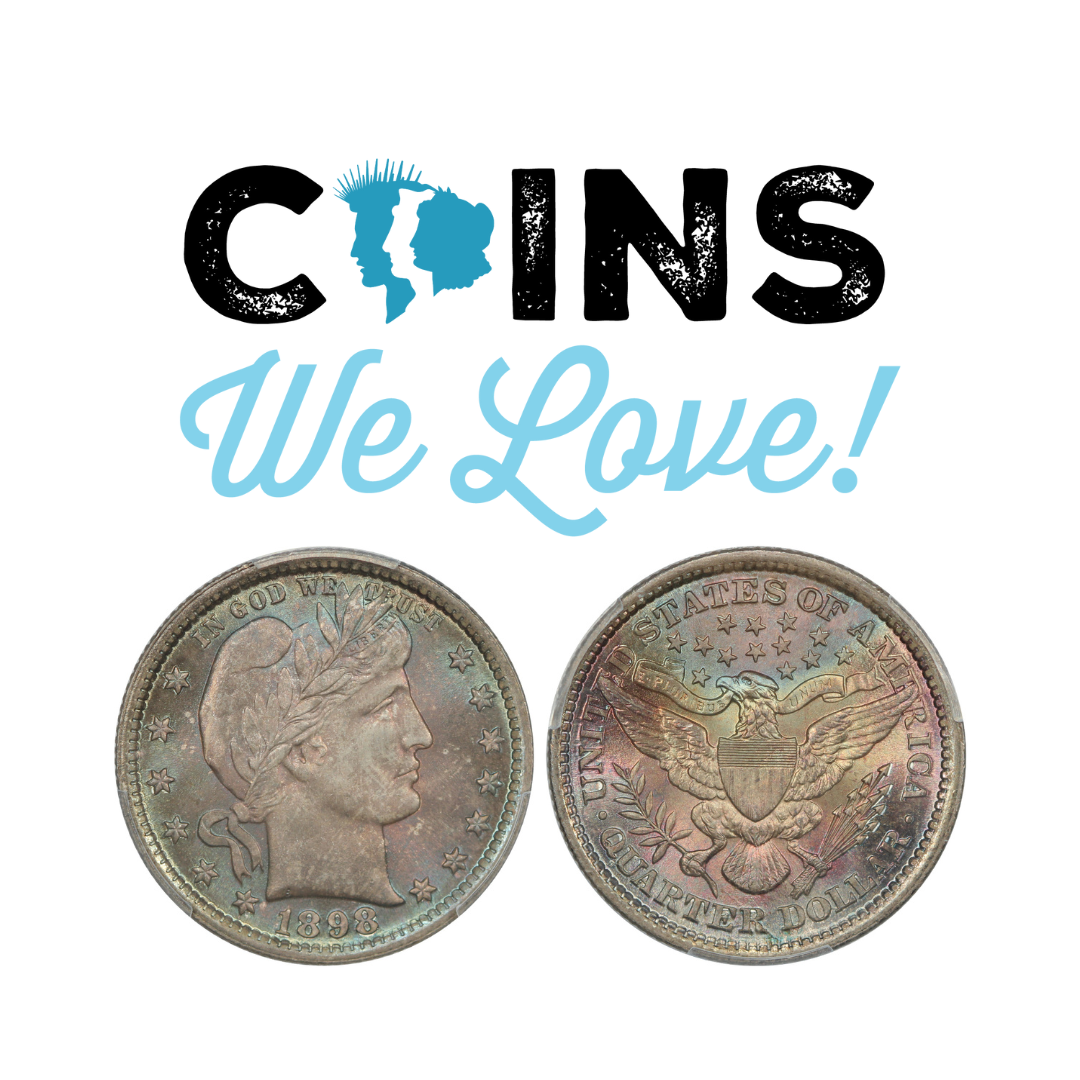Coins We Love: The Tale of Two Tails

This week, we've had a lot going on with bullion spikes and incoming collections, so it's hard to sit down and write a recap. However, Jack was digging deeper on a coin for a social media post, and we thought that it was so interesting that we wanted to share it with you. Please enjoy!
Today, I wanted to talk about my recent fascination with, in my opinion, a very underrated U.S. coin that is not often seen in the market: the 1839-O Quarter Eagle. Professionally, I buy and sell primarily U.S. coins with the occasional world coin, but personally, I’m fascinated by world medals, specifically 17th and 18th-century medals related to the early Americas. The designs are amazing, the connection to real events in history is unbeatable, and the rarity is spectacular.
Recently, I’ve been helping with some of the cataloging here, which means doing a lot of research to write accurate descriptions. Not long ago, I came across an 1839-O $2.50 Quarter Eagle, and something immediately stood out: the coin was struck with a medallic die alignment. That means the obverse and reverse face the same direction when flipped left-to-right (9 to 3 o’clock), rather than the standard U.S. coin alignment, which is flipped top-to-bottom (12 to 6 o’clock). This really threw me off because, as far as I knew, all U.S. coins were supposed to be struck in coin alignment.
This detail caught my attention because medallic alignment is something I usually see on the world medals I personally enjoy. I remember once seeing a U.S. coin with medal alignment at an ANA show when I was younger, but I couldn’t recall which one until I saw this. That led me down a research rabbit hole to answer the big question: Why was this coin struck differently?
The New Orleans Mint opened its doors in 1838, one of three southern branch mints established around that time, alongside Charlotte and Dahlonega. Unlike Charlotte and Dahlonega, which struck coins using gold sourced from the Southern gold rush, New Orleans was a major port and melting pot for foreign coinage. The mint would collect coins like Spanish Reales, British Crowns, and French Francs, melt them down, and turn them into U.S. coins. The appeal? These foreign coins already had the correct purity, so the mint didn’t have to refine the metals, just melt and re-strike.
Fast forward to 1839, the first year the New Orleans Mint struck quarter eagles. Rufus Tyler was the Chief Coiner, known for his mechanical expertise at the mint. He even adapted equipment to strike half-dollars using a quarter eagle press. But even with his experience, problems arose. The mint often received old or faulty dies and machinery from Philadelphia, and it was up to the staff in New Orleans to finish and prepare the dies.
At first, I thought maybe the medal alignment was just a mint mistake; after all, this was a new denomination for them. But after more research, I realized that both medal and coin alignment coins exist for 1839-O. My research shows about 2/3 of the coins struck that year have coin alignment, while the remaining 1/3 have medallic alignment. That can’t just be a random error…
Digging deeper, I learned about two major die varieties for the 1839-O Quarter Eagle, HM-1 and HM-2. The HM-1 variety (High Date, Wide Fraction) was struck in coin alignment. While the HM-2 variety (Low Date, Close Fraction), on the other hand, was struck in medallic alignment. So now the alignment differences made sense; they matched specific die marriages.
The total mintage for the 1839-O Quarter Eagle was just 17,781 coins. Based on survival estimates, fewer than 1,000 examples are believed to exist today in all grades combined. Of these, about two-thirds belong to the HM-1 die variety (roughly 600–700 known), while the HM-2 variety, struck in medallic alignment, is significantly scarcer, with fewer than 300 surviving specimens known. This makes the HM-2 coins not just visually distinctive but also much more difficult to find.
Here’s where it gets even more interesting. In September 1839, Rufus Tyler died, likely from yellow fever, during an outbreak that shut down the New Orleans Mint from August through November. When the mint reopened in December, Rufus’s brother, Philos B. Tyler, stepped into the role of Chief Coiner. Philos lacked Rufus’s experience, and during the resumed production in late 1839, it’s believed that the reverse die for the HM-2 pairing was accidentally installed in medal alignment.
The die was used until it shattered (This is evident on a portion of HM-2 Varity coins, and you can see a large die crack that runs almost the whole length on the reverse), and quality control was not on point, so the misalignment went unnoticed or was simply ignored. As long as the coins met the basic standards for weight and design, production continued. That’s how a full third of the year’s mintage ended up with a completely different alignment.
So what started as curiosity over a medallic alignment led me to one of the more fascinating minting quirks in early U.S. gold coinage. The 1839-O Quarter Eagle is not just the first gold coin struck at the New Orleans Mint, but it also captures a moment in time when a new mint, a health crisis, and a leadership change all intersected to create a coin with two distinct personalities: HM-1 in coin alignment and HM-2 in medallic alignment.
A small difference, maybe, but a great story, and one that has deepened my appreciation for this underrated issue. On a personal note, the presence of medallic alignment on the HM-2 variety gives this U.S. coin a deeper connection to the 17th and 18th-century world medals I’ve loved for a long time. It’s a fascinating overlap, one that bridges my professional focus on U.S. coinage with my personal love for early medals tied to the Americas. In a way, this coin feels like it lives at the crossroads of both worlds.
Thanks for reading about this fascinating issue! If it piqued your interest enough, we have an 1839-O $2.5 PCGS VF35 live in auction ending this Sunday, April 13th!
Numismatically Yours,
Jack Smith
Our Thrifty Thursday Sale this week is FR. T-68 1864 $10 CSA notes graded by PCGS in MS61EPQ and MS62. The notes depict Confederate cabinet member Robert M. T. Hunter and feature a detailed vignette of horse-drawn artillery. This is the most common Confederate issue and is popular as such. As far as values go, uncirculated examples are highly desired as they can be acquired relatively easily and inexpensively. For this Thrifty Thursday $ale, we have eleven MS61EPQ notes (normally $125) available for just $95 and eleven MS62 pieces (normally $140) available for just $110. Don't miss out on a tangible piece of history! Act fast as there are only 22 available for this price - view them here.
Click here to continue reading!
